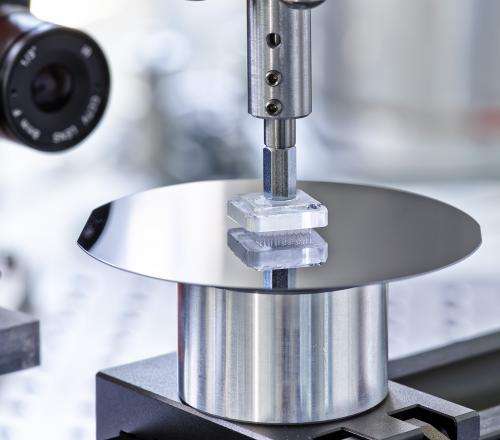Switchable adhesion principle enables damage-free handling of sensitive devices even in vacuum

Researchers at the Leibniz Institute for New Materials (INM) enhanced the Gecko adhesion principle such that adhesion can be switched on and off in vacuum.
Components with highly sensitive surfaces are used in automotive, semiconductor and display technologies as well as for complex optical lens systems. During the production process, these parts are transferred in between many process steps. Each pick-up and release with conventional gripping systems involves the risk of either contamination of the surfaces with residues from transportation adhesives, or damaging due to mechanical gripping. Suction cup systems diminish residues, but fail in a vacuum or on rough surfaces.
"Artificially produced microscopic pillars, so-called gecko structures, adhere to various items. By manipulating these pillars, the adhesion can be switched off. Thus, items can be lifted and quickly released," explains Karsten Moh from the Program Division Functional Microstructures. "This technique is particularly interesting in vacuum, as suction cups fail here," says Moh. Parts can, for example, be handled in a deposition chamber. With the currently developed adhesion system, objects with smooth surfaces can be lifted and released, having a weight of approximately 100 grams per square centimeter (ca.1.4 lbs per square inch)." In our test runs, the system has proved successful even after 100,000 runs", says the upscaling expert Moh.
The development group is now working on the gripping of objects with rough or curved surfaces without leaving residues. "Then, we could also move glass lenses without damaging them in the production process," says Moh. Therefore the investigators focus their work on testing the influence of different triggers like light, magnetic field, electric field or changes in temperature.
Provided by Leibniz-Institut für Neue Materialien gGmbH





















